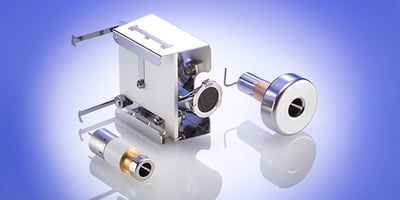When it comes to chromatography, sample recovery is of utmost importance. And one major factor that...
The Importance of Sealing Mats in Chromatography and Mass Spectrometry
In chromatography, every detail matters. From selecting the right column to optimising mobile phase conditions, chromatographers strive for precision and accuracy in their analyses. One often overlooked yet crucial component in chromatography is the sealing mat. These small but mighty accessories play a key role in enhancing sample protection and preventing contamination during analysis.

Sealing mats are a barrier between the sample vial and the external environment, ensuring the sample remains intact and uncontaminated throughout the chromatographic process. They create a tight seal that is primarily used to cover microplates or sample containers to prevent contamination, evaporation, and spillage of samples during analysis.
One of the main benefits of using sealing mats in Chromatography and Mass Spectrometry is their sample protection. By creating a secure seal, sealing mats help maintain the sample's integrity, preserve its composition, and prevent any loss of volatile compounds. This is especially important when working with sensitive samples or when conducting long chromatographic runs.
In addition to sample protection, sealing mats are vital in preventing contamination. Contaminants can come from various sources, including air particles, dust, or residues from previous analyses. Sealing mats act as a physical barrier, blocking contaminants from entering the sample vial and compromising the accuracy of the analysis. This is particularly important in high-throughput laboratories where multiple samples are processed simultaneously.
Furthermore, sealing mats can help improve chromatographic results' reproducibility and reliability. By minimising the risk of sample evaporation and contamination, sealing mats contribute to more consistent and accurate analyses. This is essential for ensuring the validity of experimental data and making informed decisions based on chromatographic results.
While they add an initial cost, Sealing Mats can save money in the long run by reducing sample loss and the need for additional reagents or repeat tests.
Sealing Mats are often made from chemically inert materials and resistant to solvents used in these analyses. The design ensures a tight seal, frequently using silicone or rubber to accommodate various types of microplates.
In conclusion, sealing mats are a simple yet indispensable tool in chromatography. By enhancing sample protection and preventing contamination, sealing mats contribute to chromatographic analyses' overall quality and reliability. Whether working with sensitive samples or conducting routine analyses, investing in high-quality sealing mats is a small but significant step towards achieving optimal results in chromatography.




